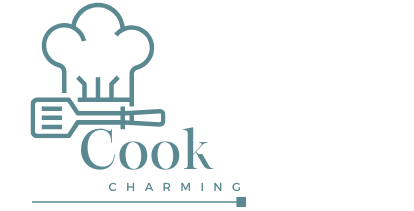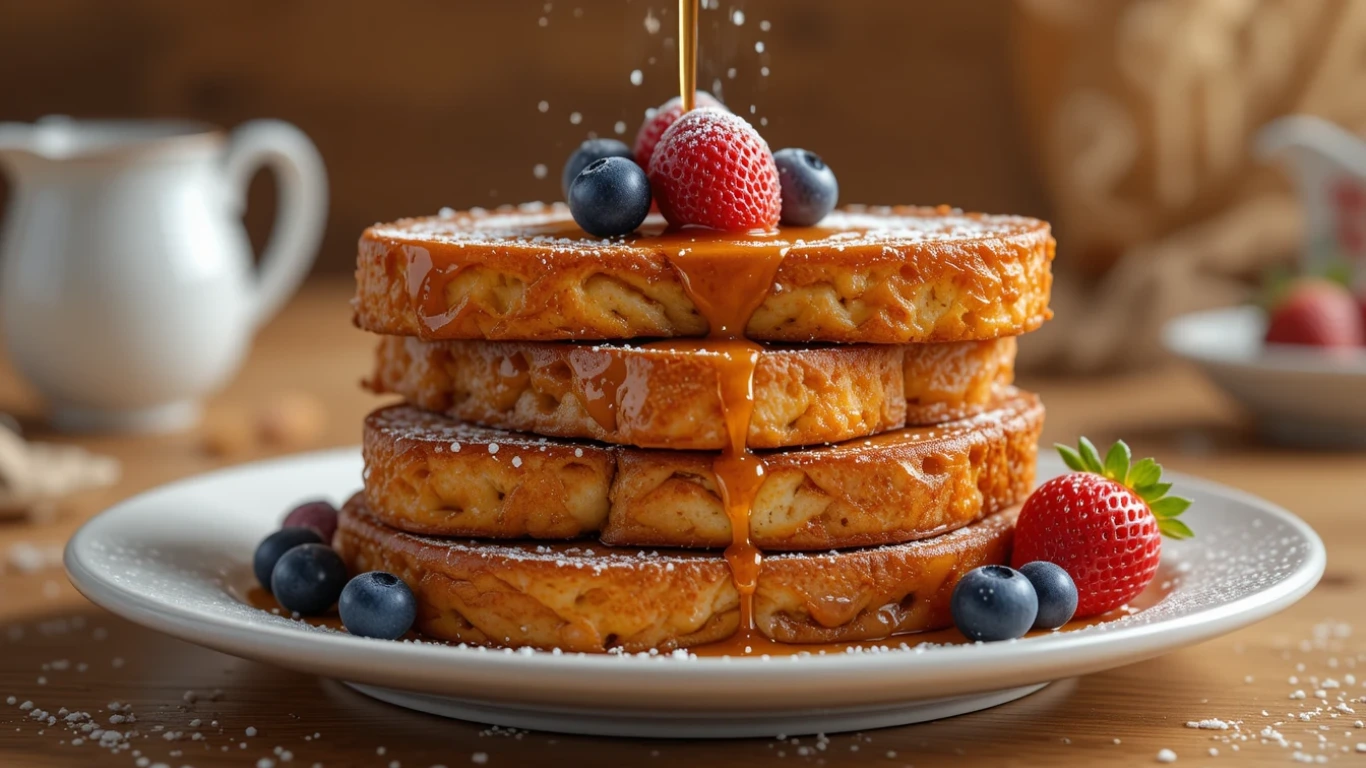Are you craving the fluffy, golden goodness of French toast but don’t want to use milk? Whether you’re avoiding dairy or simply out of milk, you can still make a perfect batch of French toast. Going milk-free might just be the best decision you make for an even better bite! Let’s explore how to make French toast without milk, with five secrets that guarantee a delicious, satisfying breakfast.
Table of Contents
Why Make French Toast Without Milk?
Health Benefits of a Dairy-Free Alternative
Going dairy-free doesn’t mean you have to compromise on flavor. Skipping milk reduces saturated fats, making this version of French toast a healthier option. It’s also a perfect choice for those who are lactose intolerant or following a dairy-free diet. Many store-bought milk alternatives, such as almond or oat milk, still provide a creamy texture, but for a simpler version, water is the star! By leaving out the milk, you’re also avoiding the added sugars and preservatives found in some milk alternatives. This makes it a great option for those looking to eat clean or improve their digestive health.
Suitable for Lactose-Intolerant Individuals
Lactose intolerance can make it hard to enjoy some of your favorite comfort foods, like French toast. But here’s the good news: you don’t need milk to create a rich, satisfying French toast. A quick swap with water, or even a bit of vanilla or almond extract, can elevate the flavor without the discomfort of dairy. This is especially important for people who experience stomach discomfort from lactose but still want to enjoy a delicious breakfast without feeling restricted.
Still Fluffy, Delicious, and Easy to Make
Contrary to popular belief, milk isn’t essential for achieving the perfect French toast texture. With the right technique and a few adjustments to your ingredients, you can make an equally soft, golden, and flavorful version. Whether you’re cooking for a dairy-free guest or simply experimenting, this version will leave you pleasantly surprised! The key to the perfect French toast lies in the balance between the batter and the bread you choose. Water, along with eggs, creates the ideal batter base, ensuring that the bread absorbs the right amount of moisture without becoming soggy.
Essential Ingredients for Perfect French Toast Without Milk
Must-Have Ingredients
| Ingredient | Quantity |
| Eggs | 2 large |
| Water | 1/4 cup |
| Vanilla Extract | 1 tsp |
| Ground Cinnamon | 1/2 tsp |
| Sugar (optional) | 1 tsp |
| Salt | A pinch |
| Bread Slices | 4 slices |
| Butter or Oil (for cooking) | As needed |
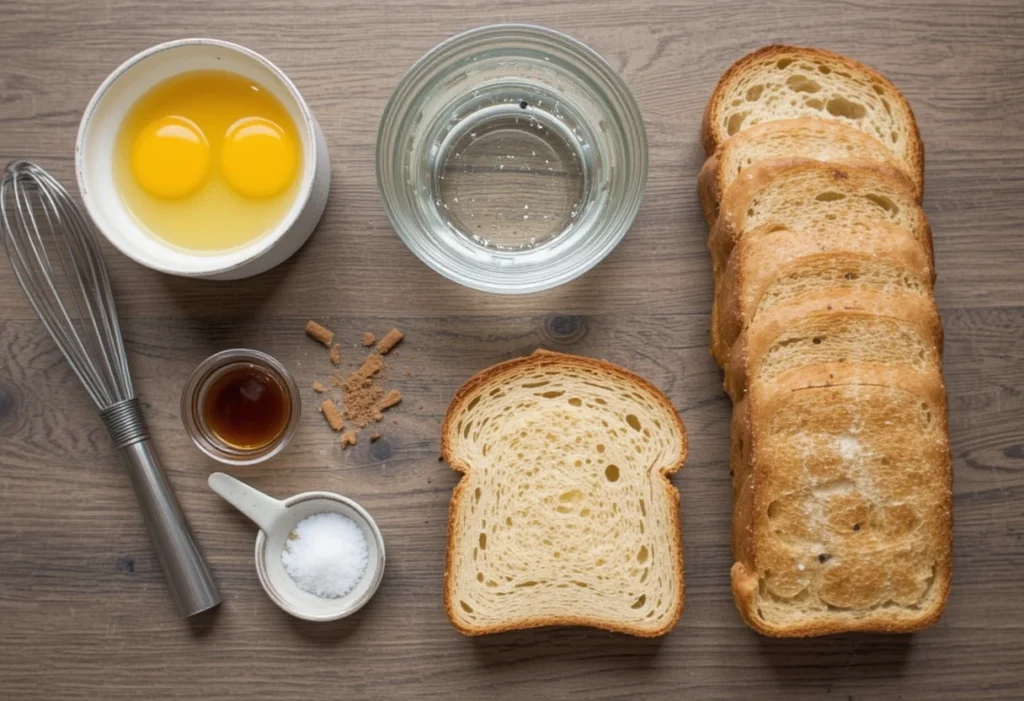
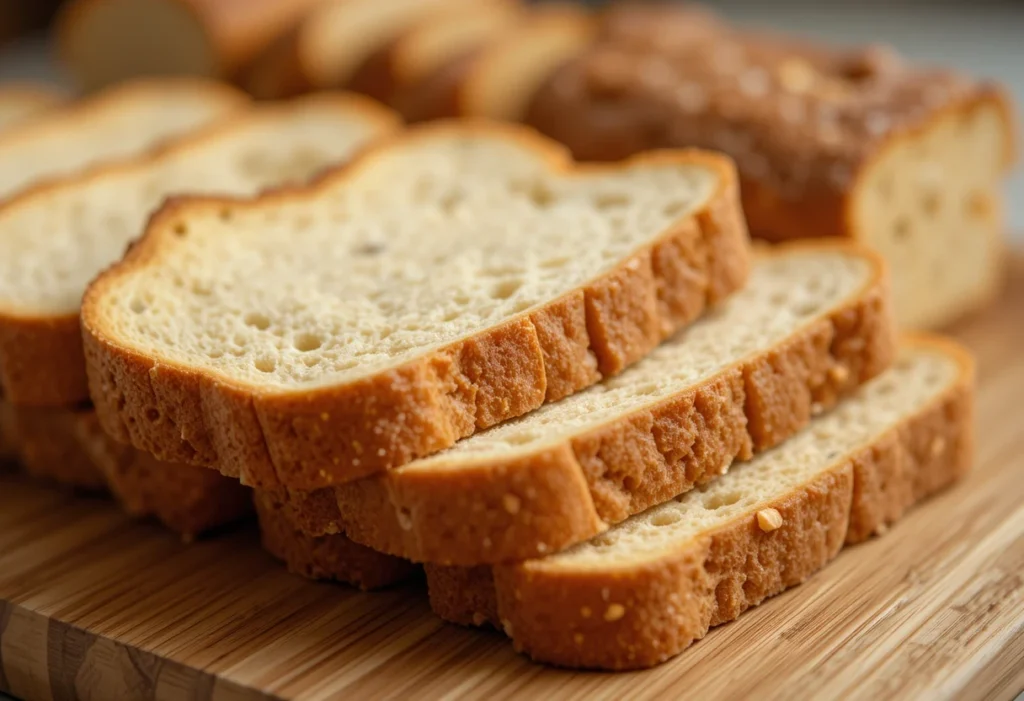
Each of these ingredients is essential in creating the perfect consistency and flavor for your French toast. The eggs provide structure and richness, while the water helps achieve the right balance of moisture without making the toast soggy. Vanilla extract gives the French toast a warm, inviting flavor, and cinnamon adds a comforting spice. Sugar is optional and can be added depending on how sweet you like your French toast. You can always adjust the quantity based on personal preference.
Best Bread Choices
When making French toast without milk, selecting the right bread is key to achieving the perfect texture and flavor. You want a bread that can soak up the batter without falling apart, and that’s where the bread choice comes in.
- Thick-Cut Bread: The thicker the bread, the better it will absorb the batter without getting soggy. Thick-cut white or whole wheat bread is an excellent choice.
- Slightly Stale Bread: Using slightly stale bread is a trick often overlooked. Fresh bread tends to become too soggy when soaked, while day-old or stale bread absorbs the batter better, preventing mushiness. It also adds to the texture, making each bite more satisfying.
- Whole Wheat, Sourdough, or Brioche: These breads offer more complex flavors than plain white bread, providing depth to the dish. Brioche, in particular, adds a rich, buttery flavor that makes French toast extra indulgent. Sourdough brings a mild tang, which contrasts nicely with the sweetness of your toppings.
Step-By-Step Guide to Making French Toast Without Milk
Preparing the Batter
- Crack 2 large eggs into a shallow bowl.
- Add 1/4 cup of water, 1 tsp vanilla extract, 1/2 tsp ground cinnamon, 1 tsp sugar (optional), and a pinch of salt.
- Whisk thoroughly until the mixture is well blended and smooth.For best results, let the batter rest for a minute or two to thicken slightly. This allows the cinnamon and vanilla to infuse the batter for a deeper flavor.
The key to a smooth batter is ensuring all ingredients are well blended. Don’t over-mix the batter, as it could become too runny or dense.
Dipping & Coating the Bread
- Quickly dip each slice of bread into the batter. Be sure not to soak the bread too long to avoid sogginess.
- Ensure both sides of the bread are evenly coated with the batter. Let any excess batter drip off before moving the bread to the skillet.
Remember, you want to coat the bread evenly but avoid letting it sit too long in the batter. The bread should be moist, not soggy.
Cooking to Perfection
- Warm a skillet over medium heat, then add a small amount of butter or oil.
- Cook each slice of French toast for 2-3 minutes per side, or until golden brown and crispy on the edges. Don’t rush this step! The perfect French toast requires patience. You want the crust to become golden without burning, while the inside stays soft and fluffy.
- Remove the toast from the skillet and serve immediately.
5 Secrets for a Better Bite
1. Choose the Right Bread
For the best French toast, day-old or slightly stale bread is your friend. It absorbs the batter without getting soggy. Brioche or challah are your best options for creating a rich and indulgent breakfast, but thick-cut white bread also does a great job. Brioche, with its buttery softness, creates the ultimate melt-in-your-mouth experience.
2. Get the Batter Just Right
A light and fluffy batter is essential for perfect French toast. Mix gently to prevent the texture from becoming too dense. Let your batter rest for a couple of minutes before dipping the bread to ensure it coats evenly without being too runny.
You can also experiment with adding a little extra cinnamon or nutmeg for a spicier, more aromatic flavor.
3. Perfect the Cooking Temperature
Medium heat is your best bet. Too high, and the outside will burn before the inside cooks; too low, and it’ll turn out soggy. You can test the heat by cooking a small piece of bread first. It should be golden and crisp when done. If it starts browning too fast, reduce the heat a bit. If it’s not browning at all, increase the heat slightly.
4. Enhance the Flavor
While cinnamon is a classic addition, don’t hesitate to get creative. Try sprinkling a little nutmeg or cocoa powder into the batter for an extra flavor boost. Orange zest or almond extract can also give your French toast a unique twist that will impress anyone at your breakfast table.
If you’re craving something more indulgent, you can add a touch of cocoa powder to the batter to make chocolate-flavored French toast.
5. Top It Like a Pro
Toppings are just as important as the French toast itself. Here are some options to elevate your dish:
- Classic: Maple syrup and powdered sugar.
- Fruity: Fresh berries and a drizzle of honey.
- Indulgent: Chocolate drizzle and whipped cream. You can even add a scoop of vanilla ice cream for a decadent dessert version!
Serving & Storing Your French Toast
Best Toppings & Sides
- For a healthier option, pair French toast with fresh fruit, yogurt, or nut butter. This adds vitamins and fiber to your breakfast.
- If you’re in the mood for something indulgent, try whipped cream and syrup. For an extra treat, add chopped nuts or coconut flakes on top.
Storing & Reheating Tips
| Storage Method | How Long? | Best Way to Reheat |
| Refrigerator | 2-3 days | Warm in a skillet or toaster oven |
| Freezer | Up to 1 month | Reheat in an oven at 350°F |
French toast can be stored in the refrigerator for a few days, but it’s always best enjoyed fresh. If you have leftovers, reheat them on a skillet for the crispiest results. If freezing, ensure the slices are well-wrapped to avoid freezer burn.
Creative Variations
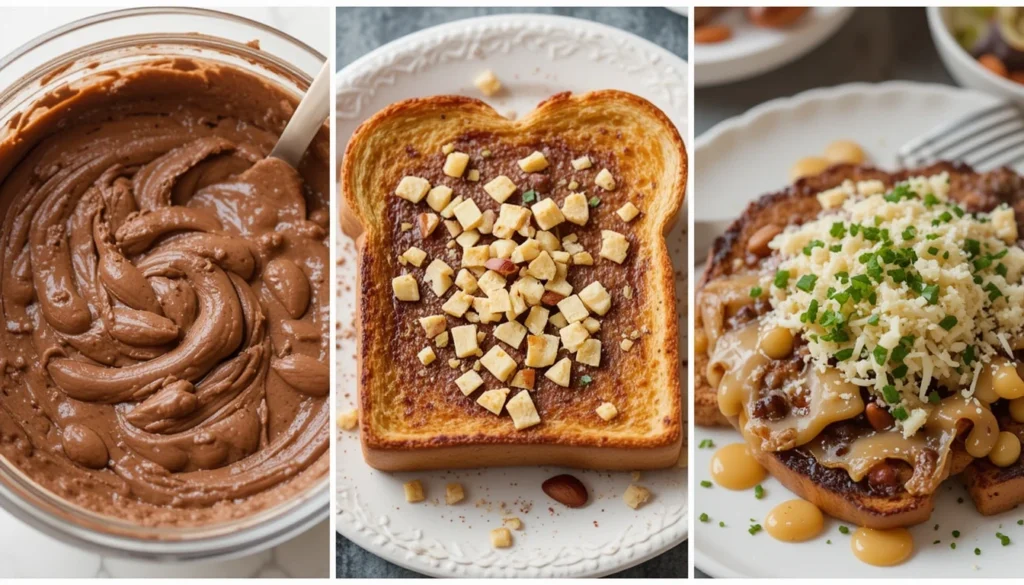
- Chocolate Lovers: Add cocoa powder to the batter for a rich chocolatey taste.
- Nutty Crunch: Sprinkle chopped almonds on the batter before cooking.
- Savory Twist: Skip cinnamon and add grated cheese and herbs for a savory breakfast. You can even turn it into a full meal by adding a poached egg on top!
Frequently Asked Questions (FAQ)
Can I Make French Toast Without Milk?
Yes! Replacing milk with water still gives you a rich and fluffy texture. Plus, you can add vanilla or cinnamon for extra flavor.
What are the best milk substitutes for French toast?
You can substitute milk with almond milk, coconut milk, or even orange juice for a different flavor profile.
How Do I Keep French Toast from Getting Soggy?
The key is not to let the bread sit too long in the batter. Dip quickly, ensuring both sides are coated but not soaked.
Can I Make French Toast in Advance?
Yes! You can make the batter in advance and refrigerate it for up to a full day.
Reheat your French toast in a skillet or oven for the best results.
What’s the Best Bread for French Toast Without Milk?
Brioche, sourdough, and thick-cut white bread are the best choices for a perfect, fluffy French toast.
Conclusion
French toast without milk is just as delicious, fluffy, and easy to make as the traditional version, and it’s perfect for anyone following a dairy-free or lactose-free diet. With the right bread, a carefully prepared batter, and the perfect cooking techniques, you can create a meal that’s both satisfying and rich in flavor. Experiment with various toppings and flavor combinations to make this dish your own. Don’t let a lack of milk stop you—try these tips and enjoy a delightful breakfast today!
